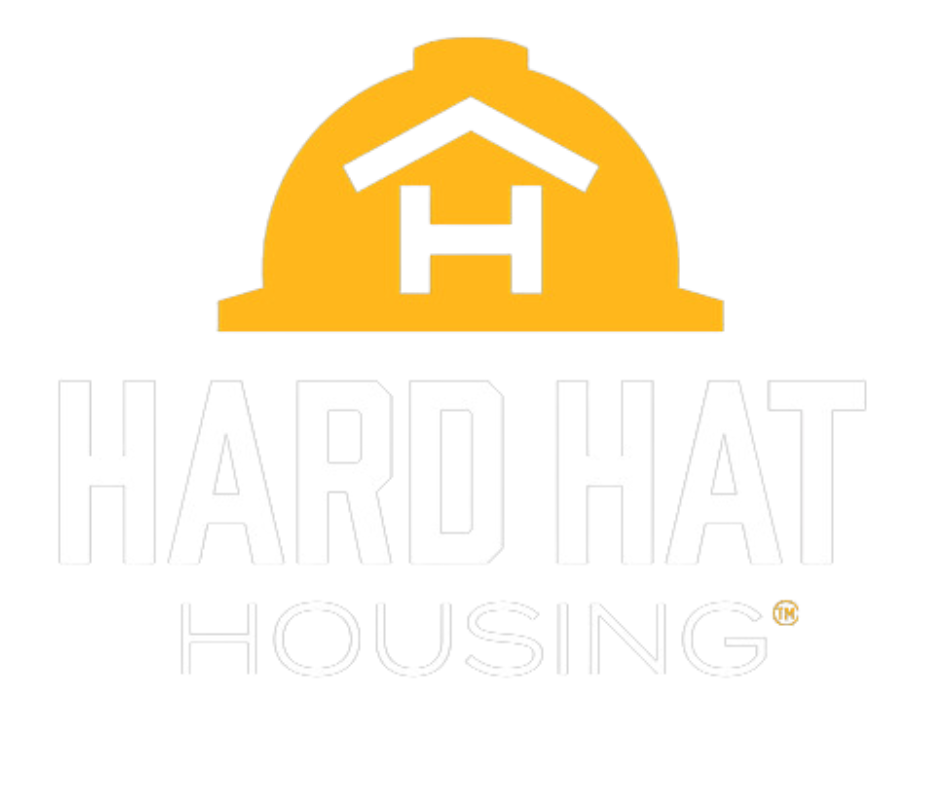Why You Need a Housing Playbook (Not Just a Vendor)
Disclaimer: Hard Hat Housing does not offer legal, financial, or tax advice. This article is for informational purposes only.
Your crews do not travel for a week or two, they build America for months at a time. That reality changes everything about lodging. Relying on a single vendor or a few websites is not a strategy. A housing playbook is. Think of it as a repeatable set of standards, checklists, and actions that any project team can run the moment a bid is won. This guide zeroes in on simplified crew housing management and the internal SOPs every team should build.
Right now the U.S. rental market still looks tight in pockets, yet new multifamily supply has helped temper rent growth in many metros. That creates openings if you source early and standardize your process, instead of scrambling ad hoc. Harvard’s housing researchers report nearly one million multifamily units under construction in 2024, a pipeline that has helped suppress rent growth and broaden options for longer stays. At the same time, budgeting must reflect real-world rates. The GSA raised the federal standard lodging per diem to $110 for FY 2025 and left it unchanged for FY 2026, which is useful as a baseline, even though many markets price above it.
What a Housing Playbook Is
A housing playbook is a living SOP that tells your PMs and travel coordinators exactly how to plan, source, evaluate, and manage lodging for crews from day one. It is not a vendor brochure. It is your company’s way to make decisions fast and the same way every time. Project-management bodies emphasize that codified practices and templates increase consistency, quality, and outcomes across teams, which is exactly what you need when crews and schedules change often. SOP guides for construction echo this, noting that written procedures raise safety, efficiency, and quality while reducing rework. The playbook does for housing what your QA/QC manual does for work in place. It captures how to set requirements, when to escalate, and who signs off, so no one starts from scratch on the next mobilization.
A strong playbook also clarifies the role of vendors rather than letting them define your process. It should list primary and backup channels, standardize unit specs and commutes, and dictate documentation requirements before the first booking request goes out. Industry productivity studies keep reminding leaders that construction still trails other sectors, which makes standardization and repeatable routines essential if you want predictable results from project to project. With a playbook, vendor conversations become faster and more decisive, because expectations, SLAs, and metrics are already written down and enforced internally.
The Risks of Vendor-Only Housing
Vendor-first, process-later housing creates hidden risk that shows up as downtime, relocation costs, and crew frustration. Consider short-term rental platforms. Their rules can change in ways that impact long stays and workforce travel. In 2025, Airbnb moved toward more guest-friendly cancellation norms for short stays and introduced new policy variants, a shift widely reported and debated by hosts and industry watchers. Hosts also discuss regular scenarios where guests cancel or must be moved due to construction noise or other issues in or near a property, which is catastrophic when a crew is mid-project. Airbnb’s own policy materials underscore that hosts may be required to cancel and refund if a listing becomes uninhabitable or inconsistent with its description, which means your team needs contingencies beyond one listing or one host. That is solvable with a playbook that includes a backup inventory ladder and pre-approved alternatives. Your crews should never be left wondering where they will sleep tomorrow.
Hotels are not immune to volatility either. Staffing in U.S. hotels remains below pre-pandemic levels according to industry analyses, which can translate to stretched housekeeping, slow service, and tougher group logistics, especially in markets facing high demand. On the other side, hosts in Facebook groups openly share concerns about renting to larger work crews for longer terms, citing wear, rules friction, and liability issues, which complicates long-stay reliability if you do not have vetted workforce housing partners. The point is not to avoid these channels entirely. It is to stop leaning on them as the plan. A playbook reduces the chance that a policy change, a labor crunch, or a single host’s decision derails your schedule.
What Your Housing Playbook Should Include
Start with budget rules that reflect the markets you build in and the lengths you actually stay. Use the GSA per diem schedule as a reference point for lodging and M&IE, but layer in market data and historicals, because a $110 standard lodging baseline is often below real rates during peak seasons in many metros. Spell out how your team rightsizes unit mix, how far you allow crews to commute, and what “home-like” means in practice. Corporate housing comparisons show that furnished apartments often beat hotels over 30+ nights due to lower nightly costs and fewer add-ons like dining and laundry, which matters for crews.
Even in 2024–2025, corporate housing price ranges often land below comparable extended-stay hotels in many markets, especially when measured over full project durations. Put those insights into your budgeting section so estimators and coordinators work from reality, not hope.
Next, codify health, safety, and rest. Fatigue in construction is real and documented. OSHA notes that long or irregular shifts increase fatigue risk and stress, and it offers guidance on building fatigue risk management programs. NIOSH maintains dedicated resources on mitigating fatigue from nonstandard schedules. Your playbook should specify quiet-hours policies, minimum bedroom privacy by role, commute caps, and criteria for night-shift housing. Include a standard inspection checklist for safety and habitability, a documentation pack for audits, and a relocation protocol with time-boxed SLAs.
Finally, define your sourcing ladder: 1) pre-vetted corporate or furnished housing partners, 2) local landlords in your vetted network, 3) extended-stay hotels on negotiated terms, and 4) short-term rentals as a controlled fallback with clear rules. This hierarchy makes your process repeatable and defensible.
How to Get Results Fast
This is where specialists fit. We provide turnkey, home-like housing near job sites, which reduces commute fatigue, improves rest, and keeps crews together without crowding. Our model is built for crews and midterm stays, not tourists, so you get monthly pricing, predictable utilities, and one invoice instead of a stack of receipts. Our customers often save 25–35% compared to hotels for similar durations, which makes your budget section easier to hit. We also maintain vetted listings and backup options so relocation plays are already scripted. In our resources, we outline how to optimize crew housing around comfort, proximity, and repeatability, which maps directly to a playbook approach. For teams that prefer a blended strategy, we can be your tier-one source while you keep negotiated hotels or local landlords as tier-two, with rules baked into your SOPs. That balance gives you capacity without chaos.
Your Competitive Edge Lives in the SOPs
Crews deliver their best when housing is predictable, comfortable, and close to the work. Building that reality at scale requires more than a vendor list. It requires an internal playbook that standardizes how you budget, source, vet, and support lodging for every project. The macro environment will keep shifting. Rental supply will ebb and flow, rates will move, and platforms will keep changing policy. With a housing playbook, you do not react to each jolt. You run the plan, measure outcomes, and keep improving. That is simplified crew housing management in action, and it is how you protect schedules, lower total cost, and win the loyalty of the people who build your jobs.
Want a head start on your housing playbook and a vetted tier-one partner?
Contact us at Hard Hat Housing to review your next mobilization and map a reliable, crew-first plan.













